Do you have a question about the Philips 50PFL5603 and is the answer not in the manual?
Identifies important safety symbols like CAUTION and WARNING.
Provides guidelines for safe TV placement to prevent injuries.
Lists 14 numbered instructions for safe operation and installation.
Details wall mount bracket compatibility and CATV system grounding guidelines.
Covers FCC, Canadian, and RF exposure compliance statements.
Explains modifications to the apparatus and required cable types for compliance.
Guidelines for placing the TV and operating environment precautions.
Information on battery handling and disposal procedures.
Lists trademarks like HDMI, Dolby, and software licenses.
Information on Netflix, VUDU, YouTube, and app requirements.
Describes the TV's functionalities and capabilities.
Lists and describes the items included in the package.
Step-by-step guide on how to safely remove the TV from its packaging.
Steps for attaching stands to 65" TV models.
First steps for attaching stands to 55", 50", and 43" TV models.
Instructions for safely lifting the TV and removing protective cardboard.
Steps for inserting batteries into the remote control.
Diagram and detailed explanation of remote control buttons and functions.
Explains the buttons on the TV's control panel.
Details the various input and output ports on the TV.
Guide for connecting antenna, cable, or satellite set-top boxes.
Instructions on connecting the TV to the power outlet.
Explains high-quality video connections using HDMI and Component.
Guide for connecting devices with DVI output using an HDMI-DVI cable.
Details HDMI-ARC audio output and component video connections.
Instructions for establishing an internet connection using an Ethernet cable.
Guides for wireless internet setup and PC connection via HDMI/DVI.
Instructions for connecting to external digital audio devices.
Instructions for playing media files from a USB memory stick.
Guides through the initial TV setup, including language, country, and network.
How to turn the TV on/off and adjust volume levels.
Methods for changing TV channels using remote or number buttons.
Switching between TV and connected external devices.
Accessing and navigating the Home menu for various settings.
How to create and manage lists of preferred TV channels.
Adjusting aspect ratios for different video signals.
Details picture format options for 4:3 and PC input signals.
Using the INFO button to view channel and program details.
Accessing and configuring options like voice guide and closed captions.
Managing connected devices and EasyLink functions.
Lists specifications for picture, music, and video files supported by USB.
Guide to viewing photos, including slide show options.
Instructions for playing music files, including repeat and shuffle options.
How to play movies, pause, search, and use playback options.
Introduction to the Setup menu and its main sections.
Detailed guide to adjusting picture settings like backlight, contrast, and color.
Navigation to TV settings, including picture, sound, and features.
Explains advanced picture enhancement features and sub-menus.
Configuring sound modes, auto volume, and speaker output.
Setting the sleep timer and basic installation steps.
How to change the on-screen display language.
Adjusting power consumption and setting TV location.
Details on one-touch play, standby, and HDMI-ARC.
Setting up and managing EasyLink functions between devices.
Configuring voice guide options and accessibility features.
Managing closed caption display and digital caption options.
Notes on captioning for analog TV signals and potential issues.
Setting audio preferences and searching for channels.
Steps for installing and removing TV channels.
Setting up child lock and managing TV/movie ratings.
Selecting Canadian/US ratings and changing the PIN code.
Setting preferred audio language and selecting audio format.
Connecting the TV to the internet via wireless or wired LAN.
Configuring manual network settings like IP and proxy.
Detailed steps for setting up wireless network connections.
Guide for manually entering the wireless network name (SSID).
Configuring IP address, subnet mask, and DNS settings.
Performing a connection test and configuring proxy settings.
Verifying the current network connection status.
Setting up home network media sharing and remote wake-up.
Managing Net TV, YouTube, Netflix, and VUDU service deactivations.
Steps for preparing and downloading TV software updates.
Detailed guide for upgrading TV software using a USB memory stick.
Updating software via network and accessing software settings.
Information on open source licenses and digital rights.
Instructions for wirelessly mirroring a device screen to the TV.
Recommended specifications for media files played via home network.
Procedures for setting up and browsing media servers on the home network.
Guide to viewing photos stored on home network media.
Instructions for playing music files from a home network.
Instructions for playing video files from a home network.
Managing apps within Net TV, including removing and moving apps.
Navigating the App Gallery to find and add applications.
Adjusting picture settings while playing content.
Guide to using the built-in web browser for internet access.
Steps to activate Pandora and add user accounts.
How to create music stations and navigate the player screen.
Answers to common questions about TV operation and troubleshooting.
Solutions for power, remote control, and picture/sound problems.
Troubleshooting distorted picture, no sound, or pixelation.
Resolving issues with closed captions and software updates.
Troubleshooting network connectivity and media playback problems.
Definitions of technical terms used in the manual.
Guidance on cleaning the TV and when to seek professional servicing.
Detailed technical specifications for picture and sound features.
Details of the product's one-year limited warranty and coverage.
Lists items and conditions not covered by the warranty.
Details regarding open source software licenses used in the product.
Identifies important safety symbols like CAUTION and WARNING.
Provides guidelines for safe TV placement to prevent injuries.
Lists 14 numbered instructions for safe operation and installation.
Details wall mount bracket compatibility and CATV system grounding guidelines.
Covers FCC, Canadian, and RF exposure compliance statements.
Explains modifications to the apparatus and required cable types for compliance.
Guidelines for placing the TV and operating environment precautions.
Information on battery handling and disposal procedures.
Lists trademarks like HDMI, Dolby, and software licenses.
Information on Netflix, VUDU, YouTube, and app requirements.
Describes the TV's functionalities and capabilities.
Lists and describes the items included in the package.
Step-by-step guide on how to safely remove the TV from its packaging.
Steps for attaching stands to 65" TV models.
First steps for attaching stands to 55", 50", and 43" TV models.
Instructions for safely lifting the TV and removing protective cardboard.
Steps for inserting batteries into the remote control.
Diagram and detailed explanation of remote control buttons and functions.
Explains the buttons on the TV's control panel.
Details the various input and output ports on the TV.
Guide for connecting antenna, cable, or satellite set-top boxes.
Instructions on connecting the TV to the power outlet.
Explains high-quality video connections using HDMI and Component.
Guide for connecting devices with DVI output using an HDMI-DVI cable.
Details HDMI-ARC audio output and component video connections.
Instructions for establishing an internet connection using an Ethernet cable.
Guides for wireless internet setup and PC connection via HDMI/DVI.
Instructions for connecting to external digital audio devices.
Instructions for playing media files from a USB memory stick.
Guides through the initial TV setup, including language, country, and network.
How to turn the TV on/off and adjust volume levels.
Methods for changing TV channels using remote or number buttons.
Switching between TV and connected external devices.
Accessing and navigating the Home menu for various settings.
How to create and manage lists of preferred TV channels.
Adjusting aspect ratios for different video signals.
Details picture format options for 4:3 and PC input signals.
Using the INFO button to view channel and program details.
Accessing and configuring options like voice guide and closed captions.
Managing connected devices and EasyLink functions.
Lists specifications for picture, music, and video files supported by USB.
Guide to viewing photos, including slide show options.
Instructions for playing music files, including repeat and shuffle options.
How to play movies, pause, search, and use playback options.
Introduction to the Setup menu and its main sections.
Detailed guide to adjusting picture settings like backlight, contrast, and color.
Navigation to TV settings, including picture, sound, and features.
Explains advanced picture enhancement features and sub-menus.
Configuring sound modes, auto volume, and speaker output.
Setting the sleep timer and basic installation steps.
How to change the on-screen display language.
Adjusting power consumption and setting TV location.
Details on one-touch play, standby, and HDMI-ARC.
Setting up and managing EasyLink functions between devices.
Configuring voice guide options and accessibility features.
Managing closed caption display and digital caption options.
Notes on captioning for analog TV signals and potential issues.
Setting audio preferences and searching for channels.
Steps for installing and removing TV channels.
Setting up child lock and managing TV/movie ratings.
Selecting Canadian/US ratings and changing the PIN code.
Setting preferred audio language and selecting audio format.
Connecting the TV to the internet via wireless or wired LAN.
Configuring manual network settings like IP and proxy.
Detailed steps for setting up wireless network connections.
Guide for manually entering the wireless network name (SSID).
Configuring IP address, subnet mask, and DNS settings.
Performing a connection test and configuring proxy settings.
Verifying the current network connection status.
Setting up home network media sharing and remote wake-up.
Managing Net TV, YouTube, Netflix, and VUDU service deactivations.
Steps for preparing and downloading TV software updates.
Detailed guide for upgrading TV software using a USB memory stick.
Updating software via network and accessing software settings.
Information on open source licenses and digital rights.
Instructions for wirelessly mirroring a device screen to the TV.
Recommended specifications for media files played via home network.
Procedures for setting up and browsing media servers on the home network.
Guide to viewing photos stored on home network media.
Instructions for playing music files from a home network.
Instructions for playing video files from a home network.
Managing apps within Net TV, including removing and moving apps.
Navigating the App Gallery to find and add applications.
Adjusting picture settings while playing content.
Guide to using the built-in web browser for internet access.
Steps to activate Pandora and add user accounts.
How to create music stations and navigate the player screen.
Answers to common questions about TV operation and troubleshooting.
Solutions for power, remote control, and picture/sound problems.
Troubleshooting distorted picture, no sound, or pixelation.
Resolving issues with closed captions and software updates.
Troubleshooting network connectivity and media playback problems.
Definitions of technical terms used in the manual.
Guidance on cleaning the TV and when to seek professional servicing.
Detailed technical specifications for picture and sound features.
Details of the product's one-year limited warranty and coverage.
Lists items and conditions not covered by the warranty.
Details regarding open source software licenses used in the product.
| Screen shape | Flat |
|---|---|
| Response time | 9.5 ms |
| Display diagonal | 49.5 \ |
| Display brightness | - cd/m² |
| Display technology | LED |
| Native aspect ratio | 16:9 |
| Supported video modes | 480i, 480p, 720p, 1080i, 1080p, 2160p |
| Contrast ratio (typical) | 5000:1 |
| Display diagonal (metric) | 127 cm |
| Screen format adjustments | 4:3, 14:9, 16:9, Auto, Zoom |
| Supported graphics resolutions | 3840 x 2160 |
| Display refresh rates supported | 24 Hz, 30 Hz, 60 Hz |
| Motion interpolation technology | - |
| Equalizer | Yes |
| RMS rated power | 20 W |
| Number of speakers | 2 |
| Equalizer bands quantity | 5 |
| AC input voltage | 120 V |
| AC input frequency | 60 Hz |
| Power consumption (standby) | 0.5 W |
| Power consumption (typical) | 125 W |
| Product color | Black |
| Panel mounting interface | 300 x 200 mm |
| Cord length | 1.5 m |
| Audio formats supported | AAC, AC3, MP3, WAVE |
| Image formats supported | JPEG |
| Video formats supported | AVC, H.264, H.265, HEVC, MPEG1, MPEG2, MPEG4 |
| Picture processing technology | Philips Pixel Plus Ultra HD |
| Tuner type | Analog & digital |
| Supported TV bands | UHF, VHF |
| Analog signal format system | NTSC |
| Digital signal format system | ATSC |
| DVI port | No |
| RF connector type | F |
| HDMI ports quantity | 3 |
| USB 2.0 ports quantity | USB 2.0 ports have a data transmission speed of 480 Mbps, and are backwards compatible with USB 1.1 ports. You can connect all kinds of peripheral devices to them. |
| Component video (YPbPr/YCbCr) in | 1 |
| Consumer Electronics Control (CEC) | EasyLink |
| USB 3.2 Gen 1 (3.1 Gen 1) Type-A ports quantity | 0 |
| Operating temperature (T-T) | 5 - 40 °C |
| Wi-Fi standards | Wi-Fi 5 (802.11ac) |
| Package type | Box |
| Package depth | 162 mm |
| Package width | 1300 mm |
| Package height | 747 mm |
| Package weight | 13417 g |
| Video apps | Netflix, YouTube |
| Depth (with stand) | 229 mm |
|---|---|
| Height (with stand) | 701 mm |
| Weight (with stand) | 10024 g |
| Depth (without stand) | 94 mm |
| Width (without stand) | 1123 mm |
| Height (without stand) | 650.2 mm |
| Weight (without stand) | 9797 g |
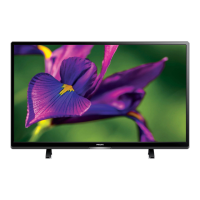
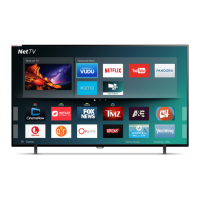
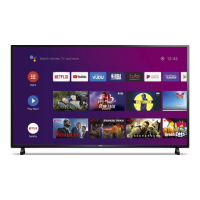



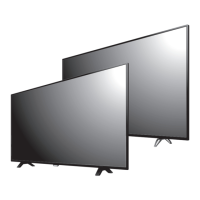

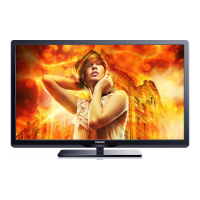



